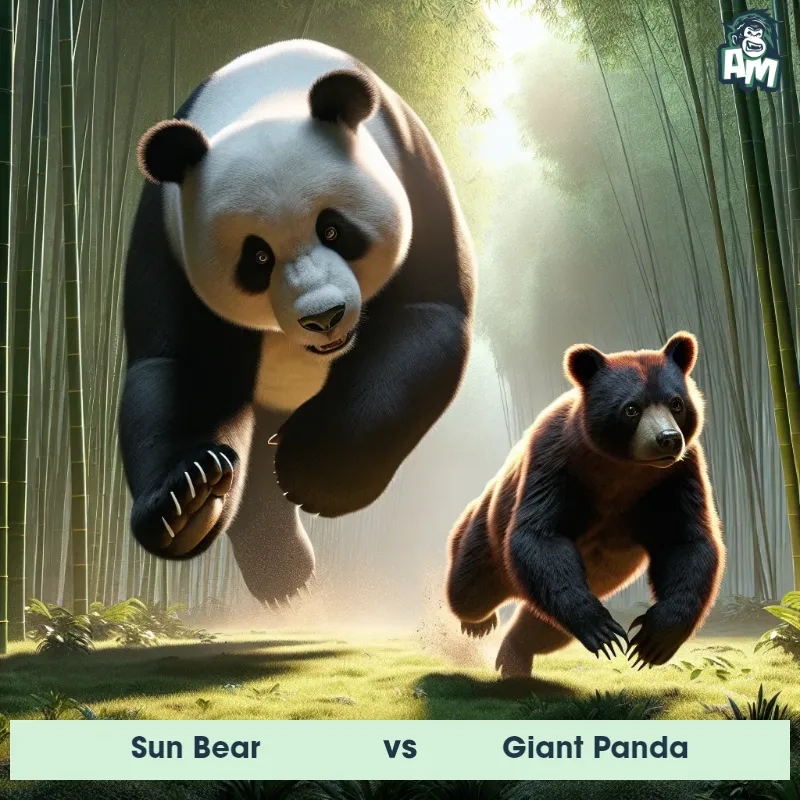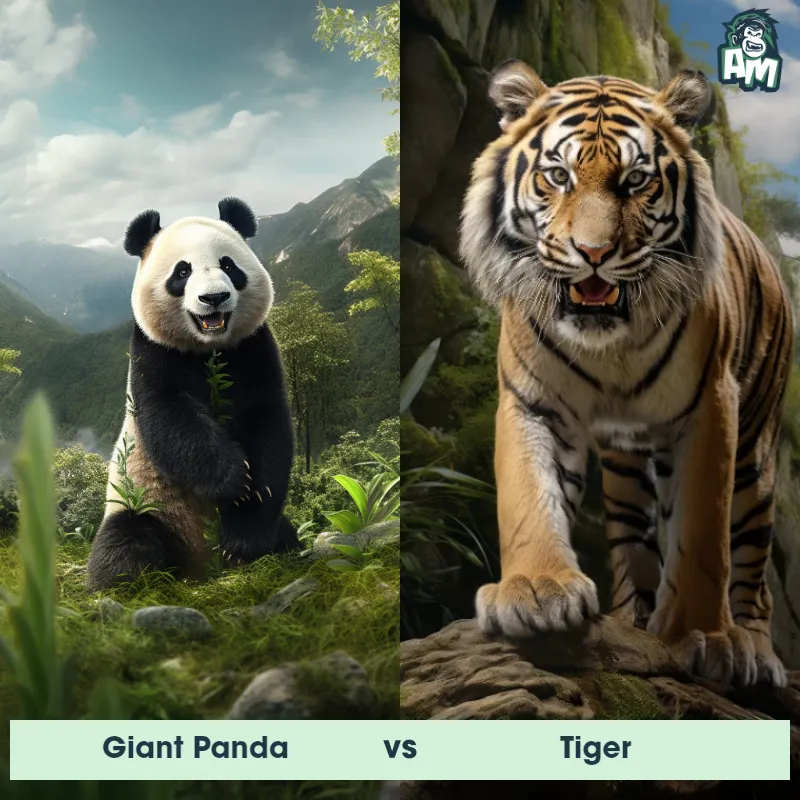The Giant Panda
The Giant Panda, also known as the panda bear, is a large mammal native to the mountainous regions of China. This iconic animal is known for its distinctive black and white fur pattern, with black patches around its eyes, ears, and limbs, while the rest of its body is covered in white fur. Adult pandas can grow up to 6 feet in length and weigh around 200 to 300 pounds. They have a stocky build, with strong jaws and teeth specialized for their bamboo diet. Giant pandas are solitary creatures and spend most of their time eating bamboo, which comprises 99% of their diet.

| Giant Panda | |
|---|---|
| Size | 4-6 feet (1.2-1.8 meters) |
| Weight | Up to 330 pounds (150 kilograms) |
| Speed | Speed: 20 mph (32.19 km/hr) |
| Key Strength | Powerful jaws and sharp claws |
| Biggest Weakness | Slow movement and lack of aggression |
| Scientific Name | Ailuropoda melanoleuca |
| Family | Ursidae |
| Habitat | Forests |
| Geography | China |
| Diet | Herbivore, primarily bamboo |
| Lifespan | 20 years - 30 years |

The Giant Panda
The Giant Panda, also known as the panda bear, is a large mammal native to the mountainous regions of China. This iconic animal is known for its distinctive black and white fur pattern, with black patches around its eyes, ears, and limbs, while the rest of its body is covered in white fur. Adult pandas can grow up to 6 feet in length and weigh around 200 to 300 pounds. They have a stocky build, with strong jaws and teeth specialized for their bamboo diet. Giant pandas are solitary creatures and spend most of their time eating bamboo, which comprises 99% of their diet.
Fun Fact: The Giant Panda has a unique thumb-like adaptation on their front paws, referred to as a pseudo-thumb, which helps them effectively grip bamboo stalks when eating.
| Giant Panda | |
|---|---|
| Size | 4-6 feet (1.2-1.8 meters) |
| Weight | Up to 330 pounds (150 kilograms) |
| Speed | Speed: 20 mph (32.19 km/hr) |
| Key Strength | Powerful jaws and sharp claws |
| Biggest Weakness | Slow movement and lack of aggression |
| Scientific Name | Ailuropoda melanoleuca |
| Family | Ursidae |
| Habitat | Forests |
| Geography | China |
| Diet | Herbivore, primarily bamboo |
| Lifespan | 20 years - 30 years |
Match Highlights
Giant Panda Matchups
We use AI to simulate matchups between the Giant Panda and other animals. Our simulation considers size, strength, and natural predatory behaviors to determine the most likely outcome.
Giant Panda: Diet, Predators, Aggression, and Defensive Behaviors
What do Giant Pandas eat?
Giant Pandas primarily eat bamboo, specifically bamboo leaves, stems, and shoots. They can consume up to 30 pounds of bamboo each day. Occasionally, they may also consume small mammals, birds, or carrion.
Do Giant Pandas have any predators?
In the wild, Giant Pandas do not have many natural predators due to their large size and strength. However, they may occasionally be preyed upon by leopards or wild dogs.
Are Giant Pandas aggressive?
Giant Pandas are generally gentle and solitary animals. They are not typically aggressive towards humans or other animals unless they feel threatened or provoked.
Do Giant Pandas fight?
Giant Pandas may engage in mild physical fights with each other, especially during mating season or when competing for resources like food or territory.
How do Giant Pandas defend themselves?
Giant Pandas rely on their physical strength and agility to defend themselves. They can use their sharp claws and strong jaws to ward off potential threats. They may also climb trees to escape danger.
What is the biggest weakness of a Giant Panda in a fight?
The biggest weakness of a Giant Panda in a fight is their relatively slow movement compared to some of their predators or competitors. While they have strength and agility, their slower speed may put them at a disadvantage in certain situations.
Fun Fact: Despite their large size and strong jaws, Giant Pandas have a diet that consists almost entirely of bamboo leaves and stems, consuming up to 20 to 40 pounds of bamboo daily.
Fun Fact: The giant panda has a distinct social behavior called "scent-marking," where they use their scent glands located under their tail to mark trees and other objects in their territory, helping communicate with other pandas and establish their presence.





















